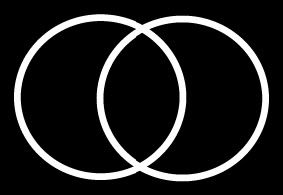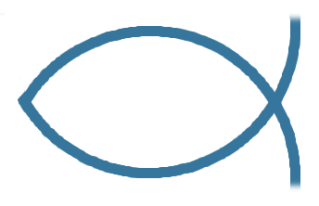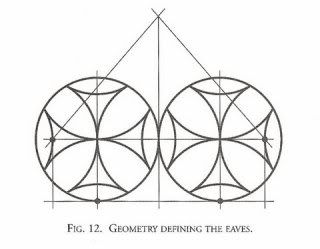I've just finished going over the articles in Timber Framing No. 70 and 90.
The articles are certainly interesting and suggest the daisy wheel was a frequently employed building aid 500 years ago. Though I'm certainly no expert on the wheel, I thought it would be helpful to add my interpretation of the articles to our discussion, especially for those who do not have access to the articles.
The three buildings surveyed by Laurie Smith are in Wales. Smith states building orientation in all cases is largely determined by the weather. The homes are built on a north-south axis, which protects against northerly winter weather bowing down from the mountains, while also allowing the eastern and western long walls to face morning and evening sunlight. A fact Smith states allowed for maximum sunlight at dark times of the day as these buildings were certainly before electricity and internal lighting.
As far as wheel geometry, what I find interesting is that he not so much focuses on the circles that make up the "spokes" of the wheel, but the fact that they overlap one another. Through this, Smith briefly alludes to religious origins. Where the wheels overlap creates an ellipse sometimes referred to as the "vesica piscis," or "fish’s bladder" (Google this term).

Smith states the vesica piscis approximates the shape of a fish and is "the earliest Christian symbol." This fish representation is technically referred to as an ichthys (again Google this term). Tom Cundiff has posted links on these symbols.

Researching the two terms will find you reading that the vesica piscis also forms the shape of the human eye. Some call it the "Eye of God" which is found in the pyramid on the back of a US dollar. This "eye" is also in Freemasonry and other early mysterious organizations.
If you arrange a number of vesica piscis within a circle (kind of like a daisy wheel on steroids) you come up with what's referred to as "the flower of life," and the "seed of life." Again, see Tom C’s links. Most accounts state the "flower of life" is found in nearly every religion and holds the keys to the universe through various geometrical configurations and patterns. It relates to everything from cell division to shapes found in nature such as hexagonal patterns on snakeskin and honeycombs.
Though Laurie Smith does not go down this road other than to say the vesica piscis is the earliest Christian symbol, he does remark that some buildings have key points of their design falling in the center of certain vesica piscis, which means the focus is where the circles overlap in the geometry.
Instead of a six pointed daisy wheel, the first home is based on a four pointed (or petaled) wheel. Thinking of the wheel as a clock face, note the four vesica piscis at 12, 3, 6 and 9, and notice how the rafters pass precisely through the center of these...where the pupil of an eye would be.

Living in Maine, I can't help but notice this rather squat home design w/ a high roof looks a lot like early cape homes here in New England.
This is all just the tip of the iceberg. I'll stop here and let some other folks who may have read the articles comment.
Though Smith just barely speaks on the origins of the wheel, he does give a Christian reference, while also saying the daisy wheel is "ubiquitous in historic buildings." Given the heavy reference to vesica piscis and its own associations (Eye of God, etc...), I think it's safe to say the wheel, and by default buildings constructed with it, exhibit religious roots.